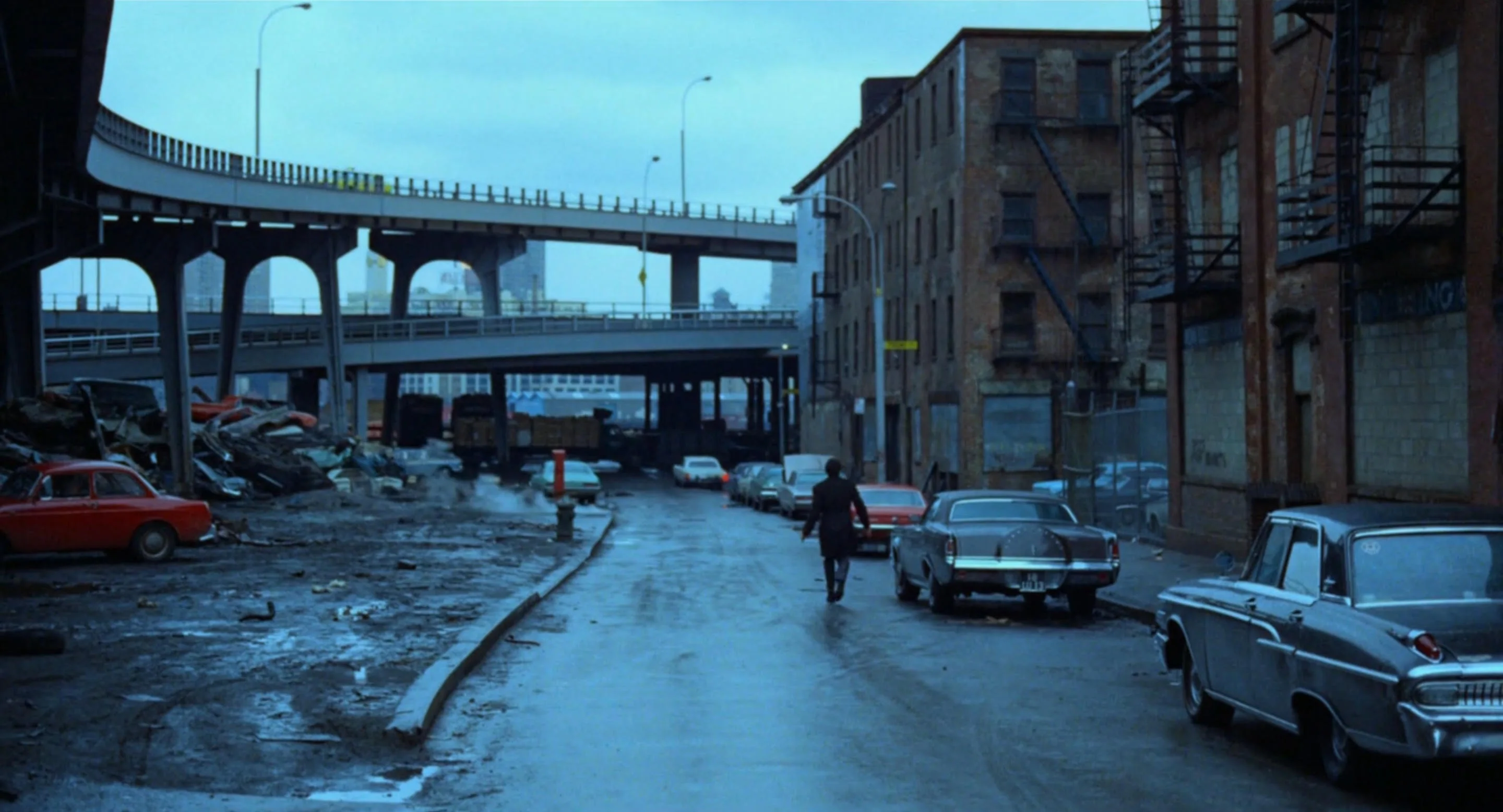An invisible force pervades every cubic centimeter of infrastructural envelopes and transport modality exchanges in The French Connection (1971). It is the unseen morphological layers which overlay against/into the film's encapsulated urbanity and its (surveillance-fetishizing) unmasking rituals (of privileged routes of clandestine mercantile exchange) that underlie its true character as a media vector of perverse ideology.
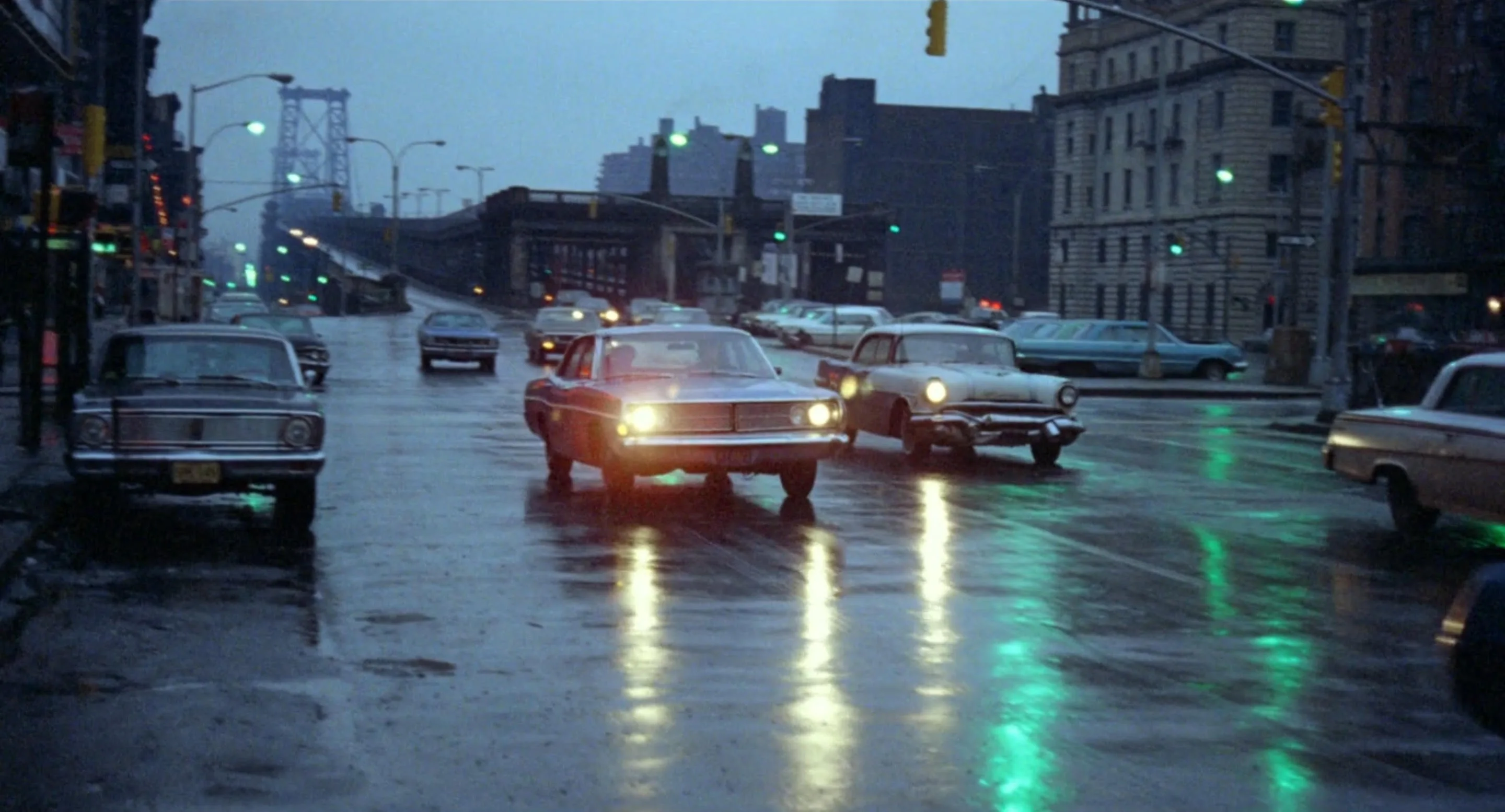
That invisible force is the aftershock of the United States of America landing the first men onto the moon. It is the increasing expenditures on imperialistic tactical speculation campaigns in Vietnam (and secretly Cambodia) all in the name of (Monopoly Finance Capital) economic ideology. It is in senses of scale too large to fathom, as in the 1970 Bhola Cyclone which left 500,000 dead. The geopolitical armature of a governance structure that would go on to draft the National Defense Authorization Act 1033 Program (1990), which began the militarization of America's local police forces, the USA Patriot Act (2001) which propelled a physically and virtually enormous surveillance architecture to emerge, and the Military Commissions Act (2006-2009) which did away with the writ of habeas corpus for "unlawful enemy combatants", is presented to us through simplified and mixed tropes in its character dynamics, relying on good cop/bad cop and neo-noir designs to seed what is almost, in effect, a silent film.
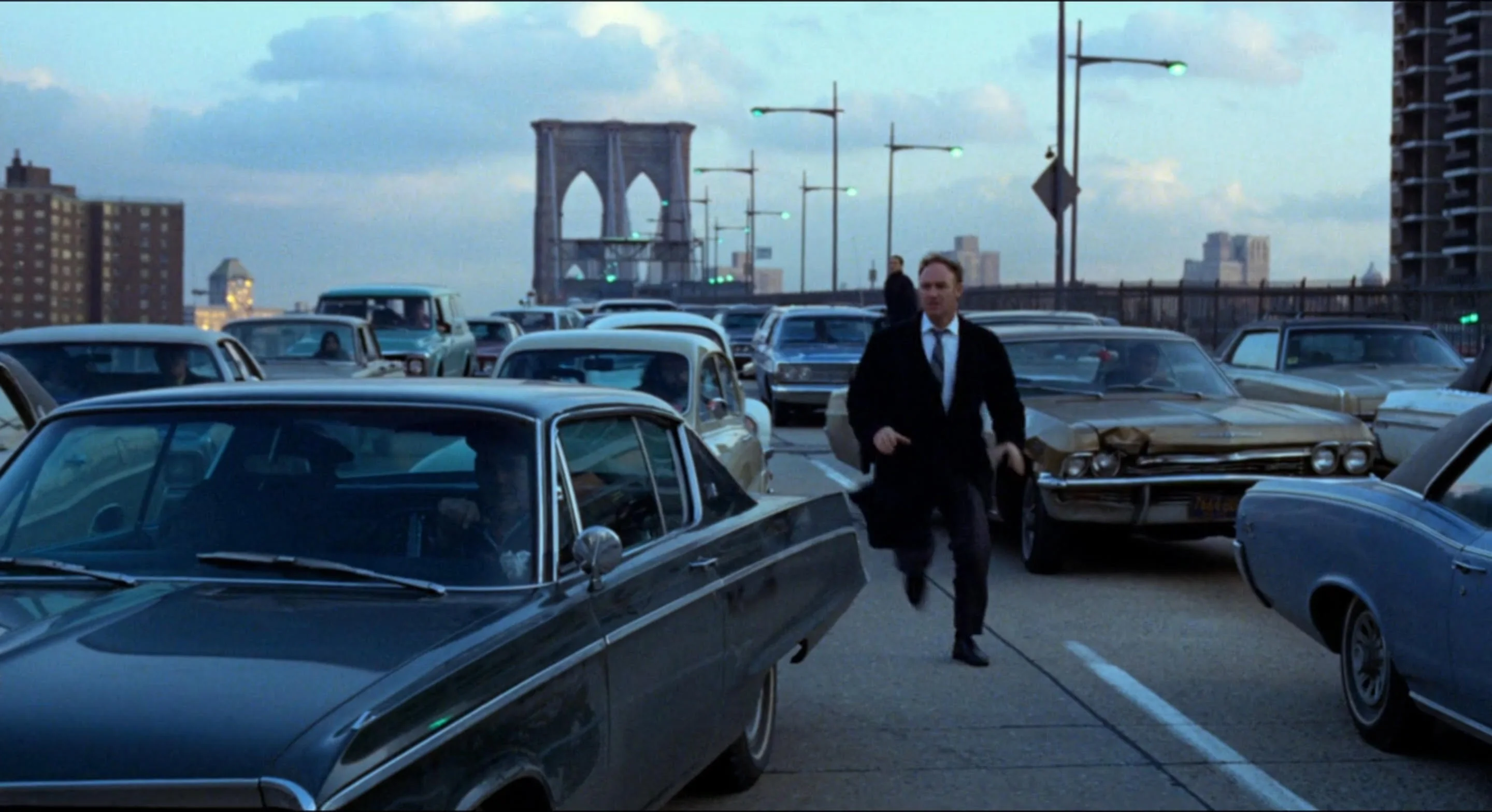
But what is the film really about? Is beleaguered policeman Jimmy 'Popeye' Doyle, played by Gene Hackman, who trusts his gut over all other evidence, the film's hero, anti-hero, or villain? Actually these questions strike one as secondary when viewing the film through the prism of sprawling gigantism and psychogeography, but we will come back to them because they are the loci of notions of 'qualified immunity' and law enforcement belligerence. The French Connection is about flows of globalized capital that, as Virilio states, act as '…foreign "intelligences" [that] breathe into the vacant body an inhabitual dynamism, commanding it to perform corresponding gestures.'
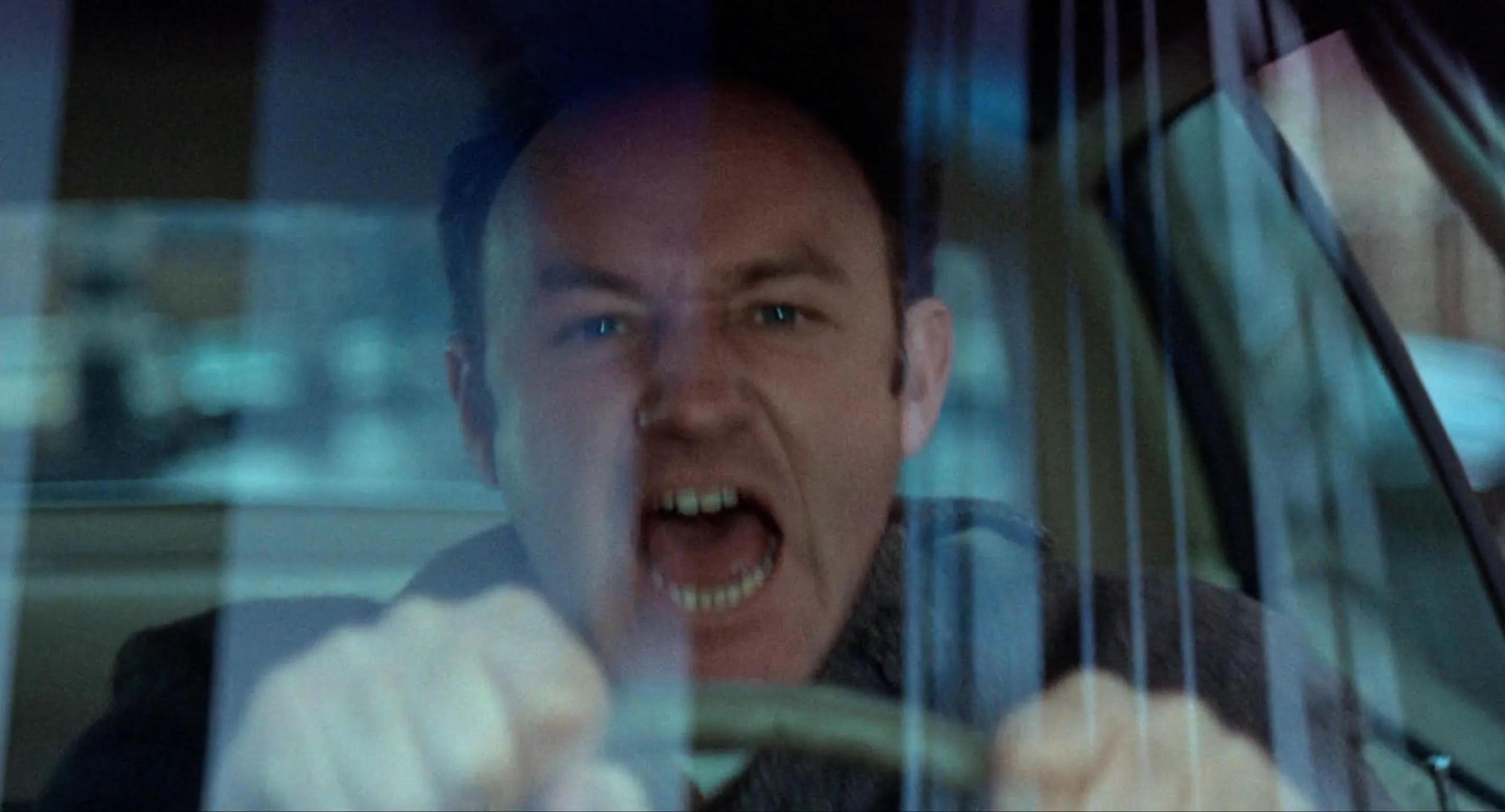
Here the 'foreign intelligence' is global capital's commodity fetishism (represented by the elite kingpin Alain "Frog One" Charnier), and the 'corresponding gestures of the body' are the literal hunger-pangs of the oppressed lower classes, both the small-time addicts and property thieves portrayed by black and brown persons of color, as well the middle class capitalists 'Popeye' and his partner Detective Buddy 'Cloudy' Russo, who through their emulation of the elite by way of manipulating and terrorizing of the underclasses, also reinforce the systemic power structures of the decaying and crumbling accidental megastructure of New York (where we see for one of the first times in cinema the site of a yet-completed World Trade Center), ground zero of Monopoly Finance Capital.

Just as Popeye recklessly endangers the lives of citizens he is sworn to protect during the much-lauded dromological car/train chase (the lawlessness of which is isomorphically (re)enacted by the film's own production in non-permitted access to streets and traffic, which created actual accidents with other drivers that were then incorporated into the final cut), the urban features of the environment also recklessly conspire to ensnare its inhabitants into the random and indifferent violence of statehood, literally 'driven' at the time-compressed (Dromologial) velocities of the combined upheavals of racial segregation and the overarching class conflict which segregation has benefited.

Many innocent people die in the crossfire of Popeye's desire for individualistic revenge and criminal murder (one of his partners, a mother walking her stroller, a black police officer), yet the film attempts to hypnotize the viewer into seeing him to be merely an overzealous defender of the law. Popeye wants to control and oppress as a way to escape his self-fashioned addictions and depravities. His unchecked freedom and autonomy of action (harassing riders of public transportation, stealing cars in broad daylight, laughing frivolously during a wiretap eavesdrop, chasing elite drug dealers to fulfill projected class desire) become the very mechanism by which militaristic, hegemonic impulses are facilitated and encoded in aggressive behaviors that end up enshrined as official policy. There is even a scene where Popeye's Police Chief boss defends him to another officer by saying 'He's a good cop … basically a good cop …' This is the normalization of police brutality, played out at the remove of administrative bureaucratic practice, and in the tacit acceptance of it by characters like Cloudy, who despite perpetuating the racist and belligerent police violence of his partner detective though his own acceptance/internalization of it, is portrayed as the character possessing the highest moral integrity in the film.
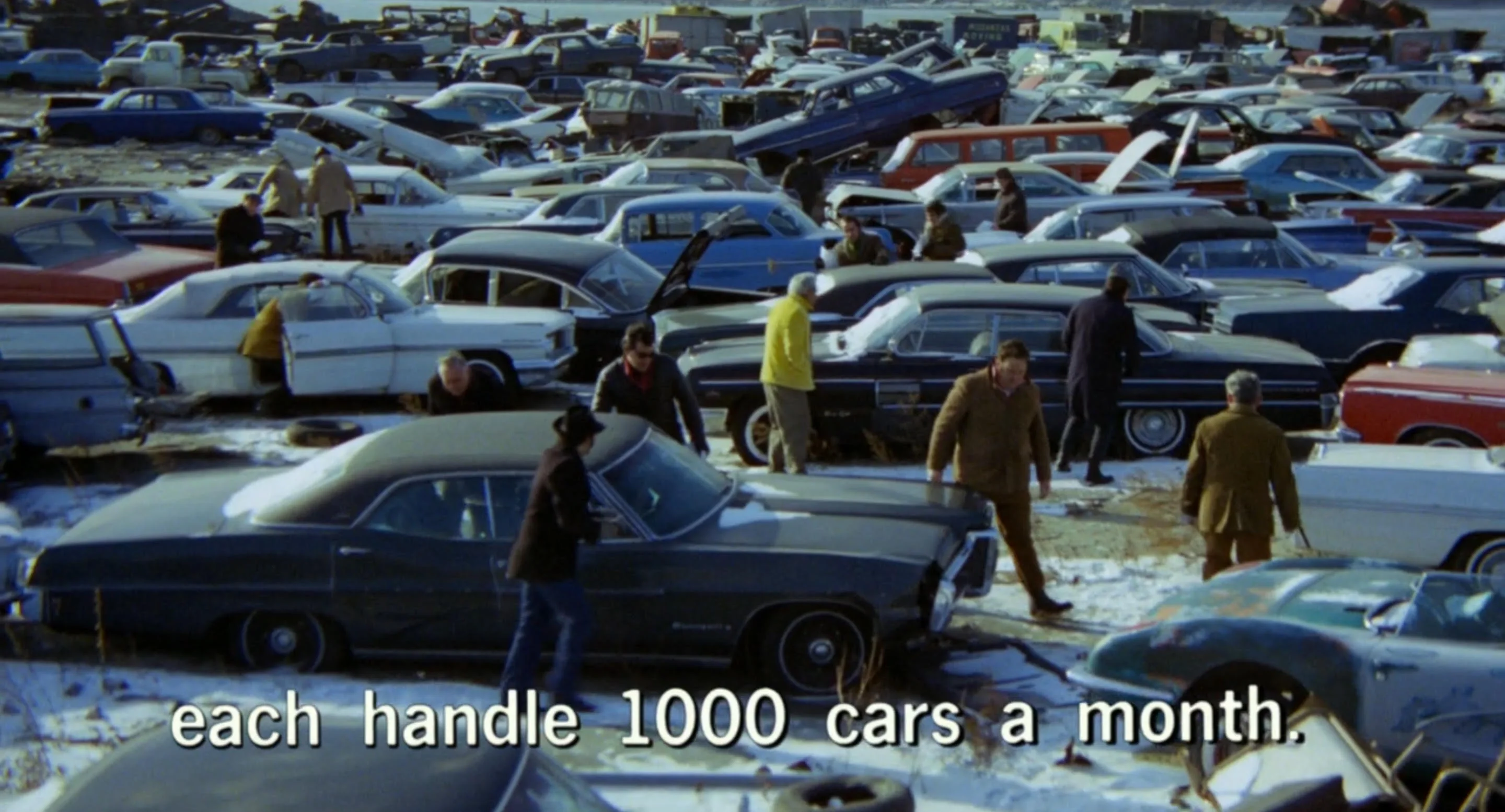
The city itself, commanding all action and velocity through is capillaries as though it were some terrible ancient monster of accumulated goods and services (throughout all history) which end up going into the wastepile and decaying into oblivion on Ward's Island, almost belies an ontological agency or intention of its own. We get the sense throughout the film that we have arrived at a scale that no one truly comprehends (1000s of cars passing through the car graveyards, the 500 cars per day in the NYPD impound, the gridlock traffic jams on the Brooklyn Bridge, the run-away BMT West End Line train), and where all atomized individuals end up annihilated, structurally and psychologically. Its pulverizing vertical transformational envelopes complete a skyward restructuring of the planet's materials for capital's accumulated spoils, and enshrines like bookends a dark American fantasy about unaccountable and ineffective policing which would go on to reward Gene Hackman for Best Actor, William Friedkin for Best Director, and The French Connection for Best Picture at the 44th Academy Awards, given by the Academy of Motion Picture Arts & Sciences, a cultural celebration of law enforcement exuberance that has disturbing implications given our own disastrous present.
